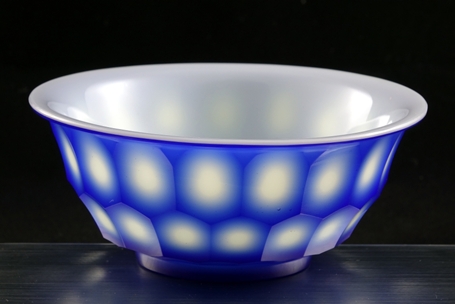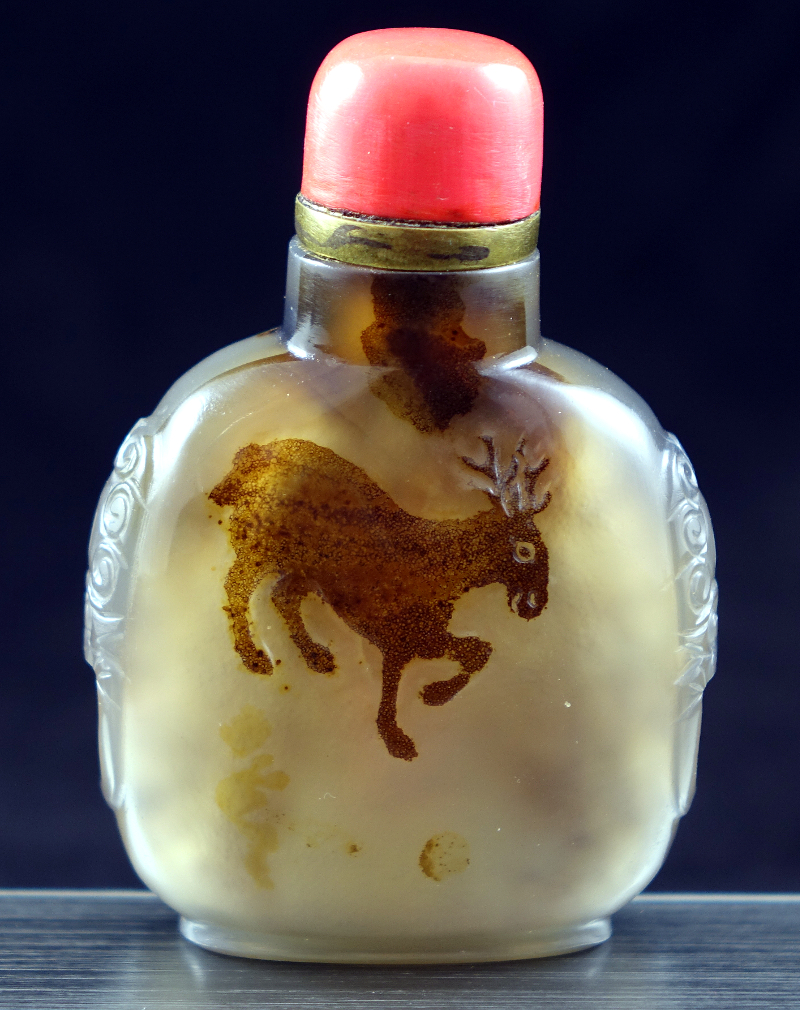This summer the theme is GLASS in the Fraeylemaborg. To match this, a colorful arrangement with snuffbottles and Chinese glass has been added to the Yellow Room with the Van Diepen porcelain.
There are almost 10,000 objects in the extensive Van Diepen collection. The proportion of so-called snuff bottles and Chinese glass is relatively limited in this, there are around 250.
According to European standards, this Asian glass collection is of a large amount.
It is important to know the background of these colorful snuff bottles from China.
What are snuffbottles?
In the 17 th century, snuffing tobacco
came into fashion with rich Chinese people, introduced from Europe. Tobacco smoking was prohibited at the time, but finely ground snuff was allowed. A medicinal effect was attributed to it, it would help with a cold, headache, stomach problems and many other diseases.
Use first concentrated around the Imperial Court in Beijing but gradually spread to the elite of China.
The start of the Quing Dynasty in 1644 marked the start of a very productive period for the workshops where the snuffbottles were made.
How was the snuff bottle used?
The finely ground tobacco was stored in a small snuff bottle, closed with a stopper. There was an ivory spoon with which the “snuff” was dug up and then sniffed.
The snuff bottles were made of all possible materials such as glass, porcelain, jade, ivory, coral, rock crystal, silver, copper and lacquer. The popularity of sniffing tobacco grew explosively and there was a large production of the often beautifully designed bottles. In the studios, the aim was to achieve ever more beautiful and costly designs and the snuff bottle therefore also became a collector’s item.
Snuff is a very finely ground and dried tobacco that is enriched with all kinds of herbs. Menthol and eucalyptus oil are commonly used ingredients. The sniffing gives a fresh, tingling sensation in the nasal cavities. Nicotine enters the bloodstream through tobacco sniffing.
This form of tobacco use is nowadays extremely rare in the Netherlands. In the Golden Age, however, snuff was the most consumed tobacco product in the Netherlands. In the 18th century, a precious snuff box in the Netherlands was also a status symbol and the well-to-do usually carried one with them.
Jan Menze van Diepen (1905-1994) started collecting these snuff bottles and glass objects late in the late sixties. His focus remained primarily on Chinese and Japanese porcelain.



